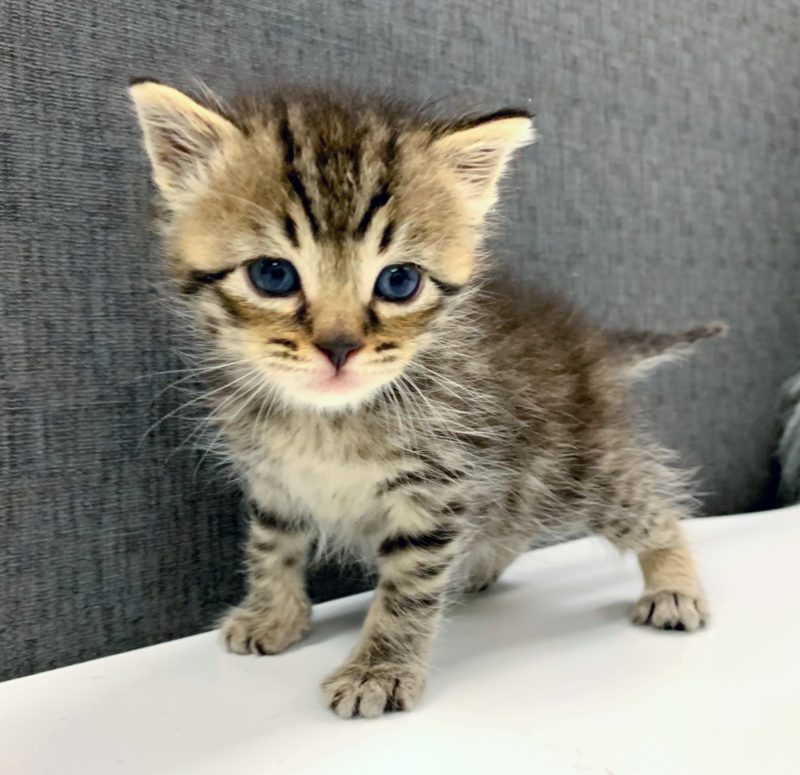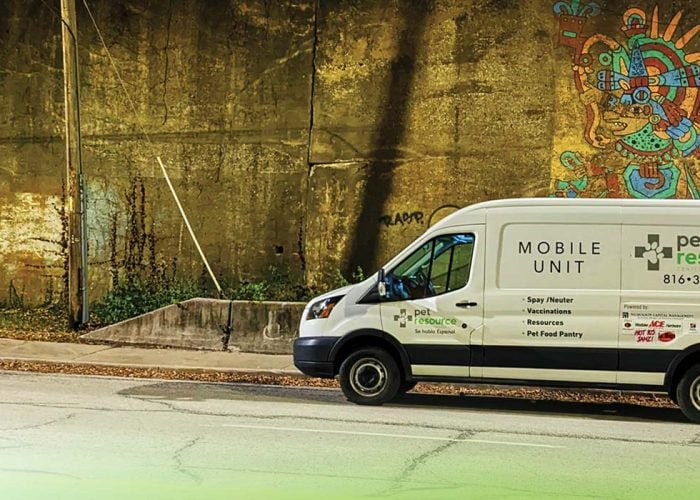Can we chat for a moment? Please, have a seat. It’s about your cat. Chances are, they’re not getting the care they need.
(Cue dramatic music and zoom the camera in on your face, utterly surprised)
But it’s true! Here’s some statistics to give you context:
More homes in the US have dogs than cats (48,255,413 for dogs vs. 31,896,077 for cats). But among the people that do own cats, they tend to own more cats per household than dog owners do dogs.
And yet: dogs get taken to the vet more. In fact, in a study of pet owners’ vet care habits in 2016, nearly 52% of cat owners said they hadn’t taken their cat anywhere for routine or preventive care, versus only 21% of dog owners. That’s a huge difference!
Why is this the case?

A SERIES OF MYTHS
Cats are not dogs. We can all agree on that, right?
But even if your cat seems a little more aloof than your dog, or quiet, that doesn’t change the fact that they have the same basic needs as a dog. They should be going to the vet for yearly checkups just like dogs, because they can have the same issues.
But some myths persist about cat health that keep folks from doing right by their feline companions, so let’s list those myths and bust ’em!
Myth 1: Cats don’t get sick as often as dogs.
This is one of those things that people think is the case, but is demonstrably false. Cats don’t get sick less than dogs; they’re just better at hiding it. In cat colonies, showing weakness can put you in a pretty precarious position socially. So, really, we should be paying more attention to our cats, not less. Everything from bad breath to changes in eating habits to an unwillingness to jump to high places can be indicators of some kind of issue. It’s really just a matter of knowing your cat, and watching for changes.
Myth 2: If your cats are indoors, you don’t really have anything to worry about.
We hear this one a lot. People think that they don’t need to get their cat any vaccinations because, well, they’re indoor only, so why would they?
One very simple answer is that if the unthinkable happened, and your cat ended up on the street either by escaping or due to a house fire or some other emergency, they would be unprotected. Rabies, FVRCP, FIV and feline leukemia are all possible for them to contract.
But more than that, what if some other cat shows up and sneaks inside the house? What if a rat or a bat were to get in? Just because those vectors for disease aren’t always present inside the home doesn’t mean they can’t end up there. I’ve had bats swoop in during the five seconds I had the porch door open, didn’t see them, and didn’t find them until the next day, when the cats wouldn’t stop obsessing over something on the ceiling. And I’m a pretty conscientious person when it comes to keeping bugs and bats and creepy crawlies out of my house.
The point is that you can never be sure.
Myth 3: Cats don’t like to go to the vet
This is less a myth than it is a partial truth, and one that’s easy enough to fix. Cats tend to be creatures of habit; that means being put into a little container and driven to the vet may not be their favorite thing to do.
But for a lot of cats, going to the vet is a perfectly normal experience. Now, that doesn’t mean it’s always going to be easy or fun for them. But you can make things a lot better with some basic behavioral training.
For example: I have a cat named Tenar who isn’t necessarily afraid of the vet, but didn’t like being in a carrier. She’s a former street cat who, despite the fact that she looks like a little chubby seal, is incredibly fast and hard to catch. So getting her to the vet was a bit of a problem (we actually adopted her from the same vet, so once she’s there, she’s great and loves everyone).
The solution? We started feeding her in the carrier. She started associating the carrier with something positive and before long her fear of the carrier was all but gone. But you don’t have to use food; toys, blankets, even small beds can be used to make the carrier a much less frightening place.
This handout has more detailed instructions, so check it out if you have trouble getting your cat to the vet.

REGULAR VET VISITS
Taking your cat to the vet for regular check-ups is important. It allows them to have baseline measurements for a whole host of vital signs. Why is this important? Because it allows them to more quickly identify what the problem is when there are changes in your cat’s behavior, diet, or activity levels.
But there’s also something to be said for establishing a strong relationship with a veterinarian you trust and who understands cats and their specific handling needs. The American Association of Feline Practitioners has a certification for Cat Friendly Practices that acts as a mark of excellence in dealing specifically with cats and knowing how best to handle them to make vet visits as stress-free as possible. This doesn’t mean that a vet without this designation won’t treat your cat well; always go with a veterinarian that you’re comfortable with and works well with your cat. But there are private practice vets that don’t know what to do with cats, and treat them like they’re little dogs. It’s unfortunate, and rare, but it happens. You should always be comfortable with the care and handling of your pet in a private practice situation.
Cats get a bad reputation sometimes, and can be pretty misunderstood. Doing right by your them means paying attention to them, knowing their habits, and reacting accordingly when they change. We know they might seem aloof and independent, but they aren’t magic (that we know of), so they need the same preventive care that you and I and Fido need. It’s one of the best ways to ensure a long, happy, healthy life for your feline friend.


